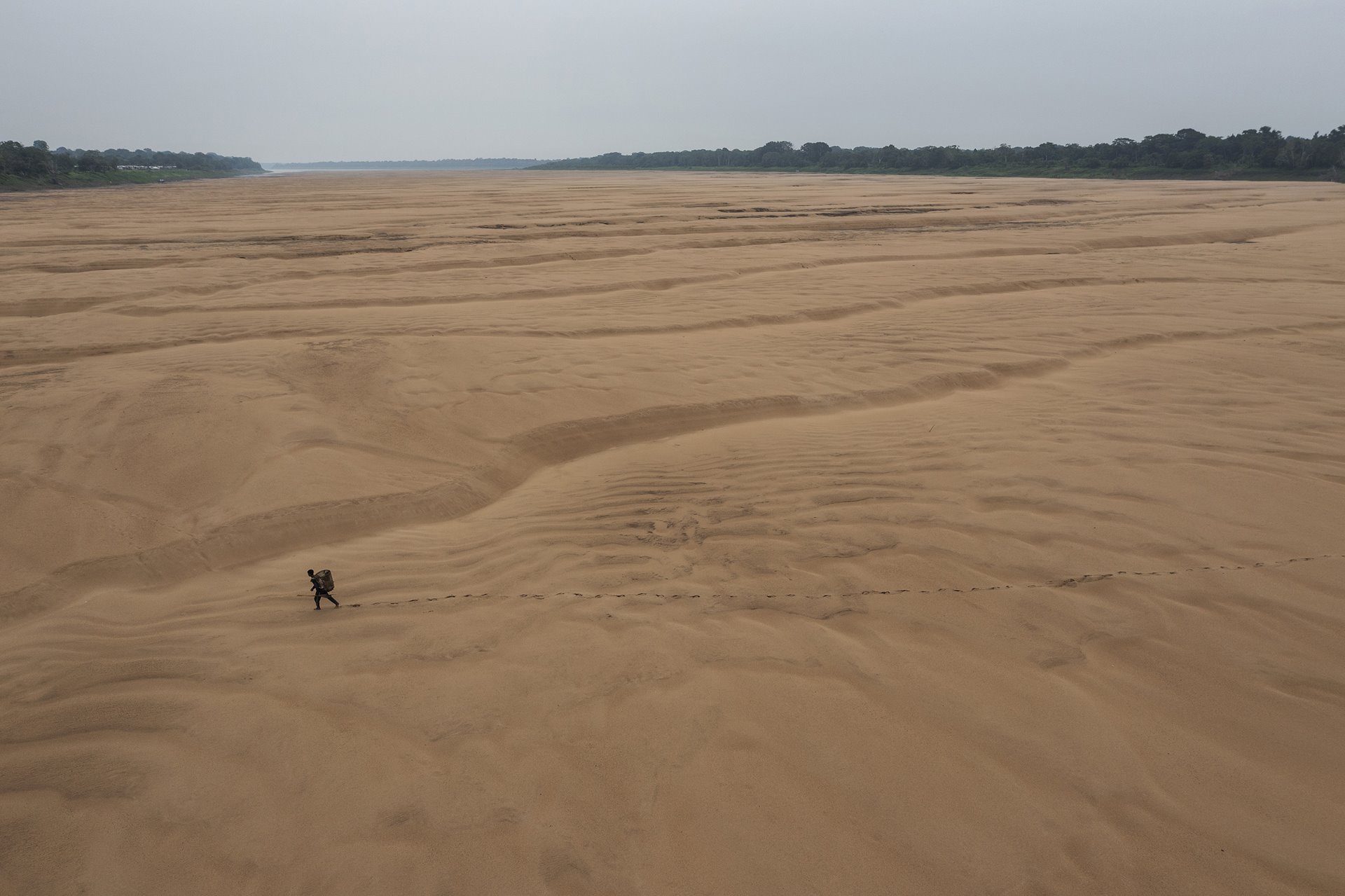A fisherman walks across the dry bed of a branch of the Amazon River, near the Porto Praia Indigenous community. Tefé, Amazonas, Brazil.
In 2023, the Amazon basin experienced its most intense drought since record keeping began, more than 120 years ago. The drought affected between 1,5 and 2 million square kilometers, about 20% of Brazil's territory, impacting some 600,000 people.
Both global heating (exacerbated by deforestation of the Amazon) and the El Niño weather phenomenon (the periodic warming of surface waters in the Pacific Ocean) contributed to the drought. According to analysis by World Weather Attribution, global heating made drought 30 times more likely in the region, drove extreme high temperatures, and contributed to lower rainfall.
The drought impacted Indigenous, rural, and river communities the most, due to their dependency on subsistence farming, natural fresh water, and the import of goods by river. Extreme drought makes their lives unviable. With few roads, people and goods move around the region by waterway. Children go to school and the elderly access health services by boat or canoe. Rivers also connect communities to urban centers, supply drinking water, and fish to eat.
Some 158 riverside villages in the Tefé region were left stranded as waterways linking them to bigger towns dried up. Stocks of basic food items and medications dropped significantly.
Porto Praia, home to the Ticuna, Kokama and Mayoruna people, has no road access and is normally reachable only by river. The drought meant that residents had to walk for kilometers along the dry riverbed to reach their homes. This photograph captures the gravity of the global environmental crisis and drought in the Amazon in one moment.
Lalo de Almeida has spent a decade documenting environmental, social, and indigenous issues in the Amazon.
Are you a photographer and/or passionate about press freedom? Sign up for our newsletter to stay updated on our annual contest and to hear about exhibitions near you.

